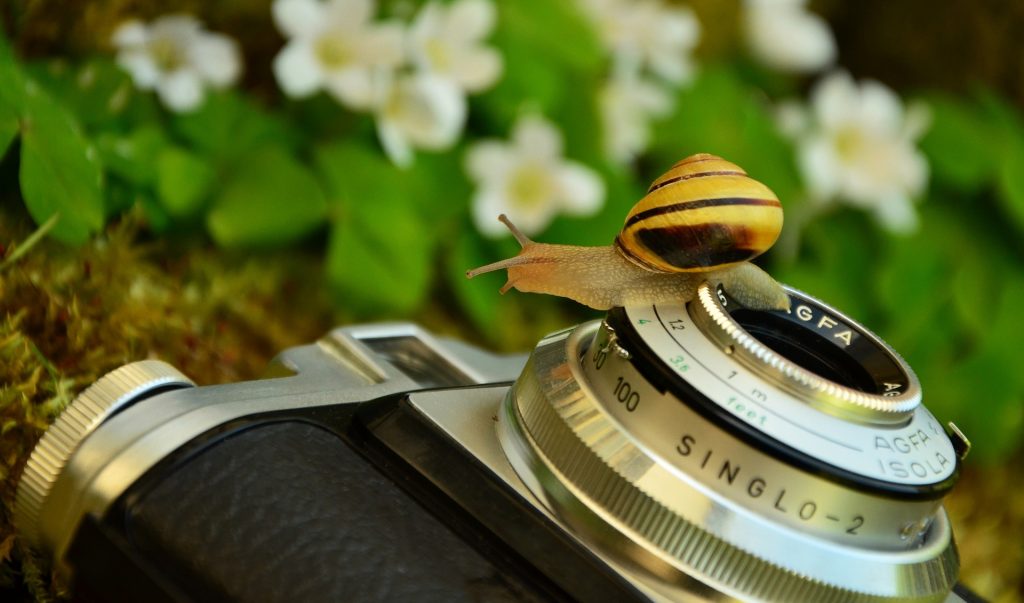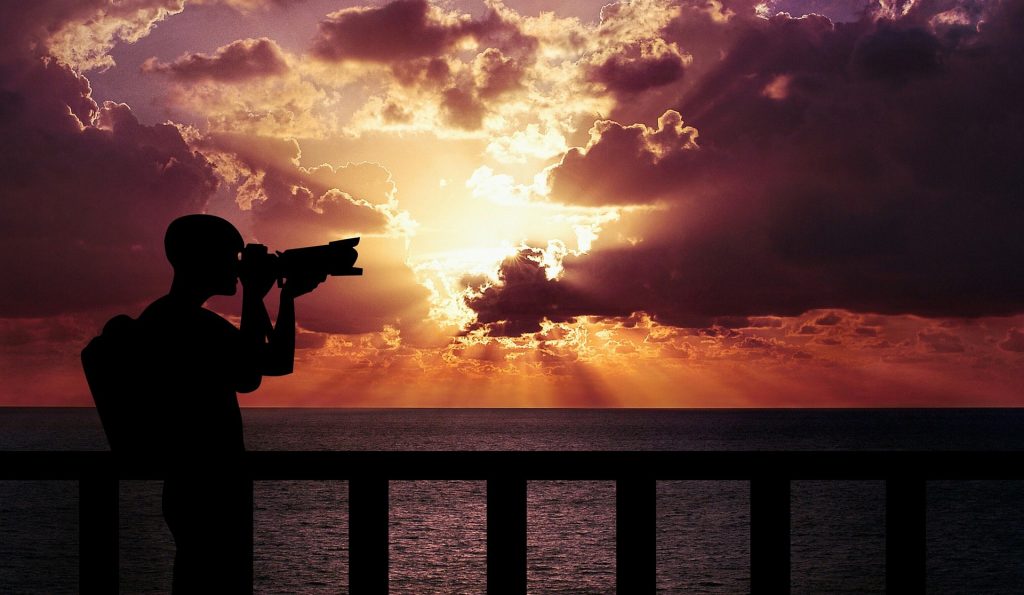The 10 best intermediate cameras of 2023 reviewed for you.
As an intermediate photographer, you’re looking for a camera that offers a variety of different capabilities to support you as you grow. These cameras can be daunting if you are not used to the differences between a beginner camera and one that’s more intermediate, bridging the gap to professional cameras.
This post is designed to help you consider several leading camera models that will suit your needs. However firstly consider what will you be using the camera for; is it for a specific activity such as car racing where the movements are fast, is it for portrait taking or close up photography where the megapixels will make a vast difference to the level of photo achieved or beautiful sun set photos on your travels.
There are many intermediate DSLR or mirrorless cameras; with some fantastic options available at a variety of price-points.
Key features that are becoming available even on low price point cameras are, rapid autofocus, 4K Ultra-HD video, a plethora of manual settings, and increasing battery life. Even the sensors themselves have advanced significantly, with greater low-light capabilities, wider dynamic range (ideal for real estate photography), larger MP counts, which is why they are becoming increasingly popular.
The number of options in the marketplace can be overwhelming, to help you out, we’ve hand-picked ten cutting-edge models.


1. Canon EOS RP
- Exceptional 4K video
Excellent autofocus and dynamic range
Fantastic low-light performance
Lightweight and simple to transport
On a budget, full frame
- There is no C-log support
With the arrival of the Canon EOS RP, Canon has also taken the mid-range category by storm. It has many of the same capabilities as the flagship EOS R, yet it costs less than £1,000 and is still a Full-frame Mirrorless Camera. It also boasts excellent video focusing, 4K ultra HD support, and can shoot up to 250 shots on a single battery.
The EOS RP is somewhat smaller and lighter, 408 grams, than the standard EOS R and has a new DIGIT 8 processor. It also contains a 3-inch touchscreen that can flip making it easy to view from all angles. Featuring a new 26.2MP full-frame sensor with rapid dual-pixel focusing and improved low-light performance and the built-in Wi-Fi and Bluetooth make this camera highly recommended.
- Photos that are crisp and have wonderful colours and details
High-quality 4K video
Slow motion at 120 frames per second in 1080P is supported
Quick autofocusing
Uses an APS-C sensor rather than a 4/3 sensor
- 4K not as sharp as rivals
Limited EF-M lenses available
One of the greatest small mirrorless cameras available is the Canon EOS M6 Mark II. It takes fantastic images and movies, is comparable to the flagships, and can take up to 305 shots on a single battery. If you’re looking for something small yet capable of high-end performance, this is one of the better options.
Canon’s APS-C sensor in this camera is fantastic, featuring a wide dynamic range, quick focusing, low-light noise management, accurate colour reproduction, and superb detail preservation. Video is supported up to 4K 30 fps, with 120fps slow motion support at 1080p.
At 0.89 pounds / 404 grams, the camera is nice and light, making it a perfect companion for everyday adventures and travel.
3. Nikon D3500
- Excellent ergonomics
Fantastic picture quality
Affordable and versatile
- Fixed back screen (no flip or rotation)
The Nikon D3500 is not the most complex DSLR available, but its simplicity, controls, and picture quality make it our top suggestion for anybody just getting started. The D3500 lacks some features which are available on other models, these include a fixed back screen that isn’t touch-sensitive, hybrid on-sensor autofocus, and the ability to capture 4K video.
However, its 24-megapixel sensor produces super-sharp, super-high-quality photographs, and Nikon’s newest AF-P retractable kit lens is a small miracle that focuses extremely quickly in live view, despite the lack of on-sensor phase-detection autofocus. The D3500 is simple to use, has more power than it seems, and is an excellent entry point into interchangeable lens photography, the price point makes this a good choice for our next camera.
- Excellent 20MP sensor
5-axis in-body stabilisation
Compact body, small lenses
- Uses an MFT sensor which is smaller than APS-C sensors
The Olympus OM-D E-M10 Mark IV is great for learning both photography and videography, and portable enough for everyday usage, with a flip-over screen for selfies and extremely good in-body image stabilisation. With 4K video and appealing style, the E-M10 Mark IV is suitable as an intermediate camera that can do it all. Although it has a smaller Micro Four Thirds sensor than other mirrorless cameras or DSLRs, the lenses are smaller and lighter. This is a fantastic tiny camera that is much more powerful than it seems and could last you a long time. Great for travel and your next TIK TOK.
5. Fujifilm X-S10
- Superb build quality
Compact size
Variable-angle touchscreen
- Average battery life
No separate charger included
Comparatively slow auto-focus
From the moment you pick up this camera, it is evident it has been well-designed and is a big step up from amateur cameras. The build quality and handling are immediately noticeable, while the inclusion of IBIS (in-body stabilisation) gives this camera an ideal combination of quality, performance, and value in the APS-C mirrorless camera segment. This is an excellent option for photographers wishing to replace an aging DSLR or mirrorless camera or upgrade from a more basic camera. The image stabilisation, 4K video, and flip-out screen of the X-S10 check all the boxes for intermediate photographers and those upgrading from a beginner camera.
- Excellent value for money
Variable-angle touchscreen
Incredible battery life (1300 shots)
32.5 megapixels
- Mid-range buffer capacity (11fps; 56 JPEG / 25 RAW)
Minor lag while switching between photos and videos
No USB charging
We realise mirrorless cameras are popular, but we’ve also included Canon EOS 90D for all of the DSLR enthusiasts and the Canon ecosystem devotees! The Canon EOS 90D is an incredible APS-C camera, combining a 32.5MP sensor, 11fps continuous shooting speed, and 4K uncropped video.
Canon’s user-friendly design makes this camera a joy to use, with adequately spaced buttons and a clean and well-thought-out interface. This contrasts favourably with the Nikon D7500 (later on our list) which seems packed with buttons.
Another feature we were very impressed with is the incredible battery life – 1300 shots – which is far greater than many other comparable cameras. Powered by Canon’s DIGIC DV 8 32.5MP sensor, the camera produces amazing results in a variety of conditions, with a clever auto-focus mechanism that quickly follows moving objects and eyes.
7. Sony ZV-1
- Variable rear screen
Windshield for crystal-clear audio
Brilliantly quick autofocus
- No viewfinder
Normally, we advocate interchangeable lens cameras for any serious photography or filmmaking, but the Sony ZV-1 is an exception. It has a fixed 3x zoom lens and a 1-inch sensor, and while this may be smaller than most other cameras on our list, it compensates for this by being super-compact and being able to slip almost undetected into most pockets. Fast to focus, with an included wind muffler for improved audio recording, and brilliant controls for vlogging, this is a camera not to be missed!
8. Canon EOS R5
- Extremely high picture quality
Phenomenal 8K video
20 fps continuous shooting (super fast compared to others on our list)
- 8K recording limits
Minor lag while switching between photos and videos
No USB charging
The Canon EOS R5 is an excellent option for those looking for professional-grade photos and videos. It is the most professional of those reviewed here, and at 3-4x the price of other models is targeted above the intermediate market. Worth considering though if budget isn’t an issue.
Canon’s new flagship mirrorless camera, the EOS R5, seems to be attempting to monopolise every market area at once. It has a brand-new 45MP sensor that delivers photos with remarkable detail owing to a new low-pass filter, as well as the EOS-1D X Mark III’s class-leading autofocus technology with a massive 5,940 AF points for photos and 4,500 for video. The video specifications of the EOS R5 are nothing short of cutting-edge, capturing uncropped 8K raw footage at 29.97fps, or 4K at 119.88fps. If you’re in the market for a mirrorless camera that does it all, the EOS R5 is well worth a look!
9. Nikon D7500
- High ISO
51 focus points
4K video recording
- Relatively low burst capacity of 8 FPS (vs 14 and 20 on some other models)
Heavy
Nikon provides an amazing intermediate camera that excels in most aspects. The Nikon D7500 features some amazing metering upgrades and has improved FPS to ensure that your camera never misses a moment and that every shot comes out clear and crisp. The battery life of 950 shots equates to around 3 hours of shooting.
The camera has a compact design, yet functions are well-spaced and feel natural in the hand. It features a 3.2-inch touchscreen and a small LCD for displaying settings.
The 20.9MP Expeed 5 sensor provides high ISO support, generating excellent shots in low light. It has a continuous frame rate of 8 FPS, which is quite high, however, falls short of the 14 to 20 fps of some other cameras reviewed above.
The 51 focus points and large focus area are key factors that set this camera apart from many other models, significantly improving the sharpness of shots captured. This camera is well worth considering!
10. Sony Alpha A6100
- 11 FPS
425 focus points
24.2 MP
- Non-weatherproof shell
Plastic build
No included charger
Mid-low battery life (420 shots)
Sony is the brand to beat when it comes to image quality, and the Sony Alpha A6100 includes another of the world-class sensors they are recognised for.
The battery life leaves a little to be desired at 420 shots, however, this is still quite a lot for the typical intermediate photographer, and significantly above many beginner cameras.
A 3-inch touchscreen that can be tilted 180 degrees enables you to review images in the field, while the comfortably designed body is constructed from plastic with a rubber finish. Typical of many mirrorless cameras, the buttons are entirely on the left.
425 focus points with human and animal eye tracking are coupled with a 24.2 MP sensor that produces fantastic images, with a continuous rate of 11 FPS, far exceeding many beginner cameras which typically feature rates in the low single digits. While this camera may not be our #1 choice, it is still well worth a look.
There are many other reviews which may also help you find your perfect camera take a look here.

